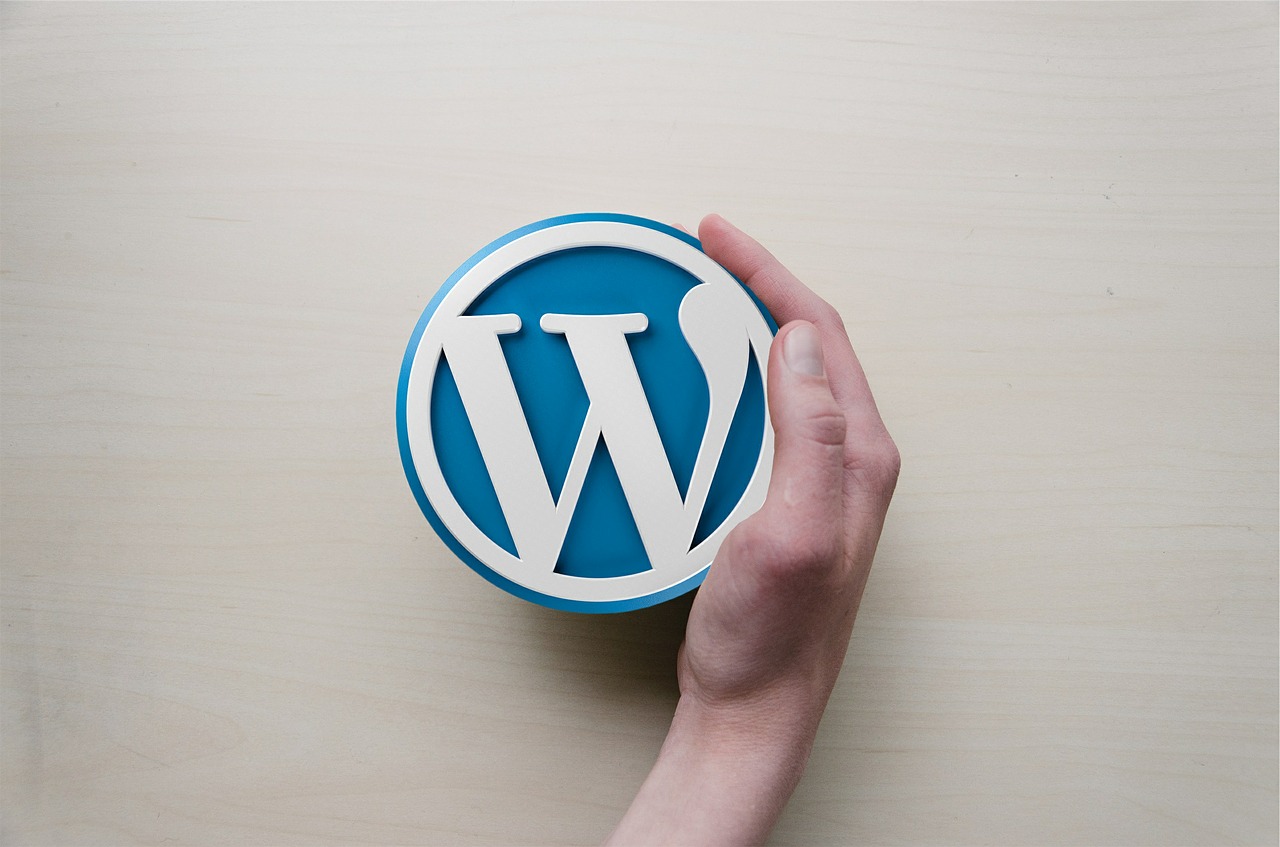If you are looking to start a website or blog, you might have heard of “WordPress” before. Although a lot of people have heard of this before, some might not know what exactly it is.
Therefore, in this complete guide, you will be able to learn all about WordPress and how to get started with WordPress in designing your website.
As we got lots to cover and without wasting more time on the introduction, let’s dive right in to the guide!
First things first,
What is WordPress?
Simply, WordPress is a Content Management System (CMS), which is a platform that allows you to create, customize and host a website online.
WordPress was founded in 2003 by Mike Little and Matt Mullenweg. It was first built as a basic blogging platform for induvial blogging enthusiasts to create and lunch their own blogs online, but as time went by it grew into a more powerful and flexible online platform where people can make any type of website they wanted.
To give you a little perspective of how big WordPress is in the web design industry, over 34% of the websites online are powered by WordPress with a whopping market share of 60.8% as for a study done in 2020.
WordPress.com Vs WordPress.org
Under WordPress, there are two separate sub platforms as WordPress.com and WordPress.org. Most people think that these two sub platforms are the same, but they are not, they are completely different in terms of functionality.
WordPress.com
WordPress.com is an online website builder where people can build their own blog or website and host it on WordPress’s hosting server for free. This type of website can be identified from their domain such as “mydomain.wordpress.com“.
WordPrress.org
WordPress.org on the other hand is also a website builder but, a much more powerful platform. In order to use this WordPress platform, you have to have your own web hosting with a domain name and install WordPress to your domain. Here, there will be no “.wordpress.com” at the end of your domain name, there will be a clean domain name such as “mydomain.com”.
For the sake of this complete guide, we will be focusing on WordPress.org for the rest of the article as it is the most widely used WordPress platform.
In case you are interested to know more in-depth differences between the two platforms, check out this article on the differences between WordPress.com and WordPress.org.
WordPress Vs Other Platforms
WordPress dominated the website builder platform for a long time and I am confident to say that they still dominate the industry. With some new website builders coming to the market in recent years, WordPress has been able to maintain their market share rock steady as those new website builders don’t offer the customizing freedom and functionality that WordPress offers.
WordPress is an open-source software, which means that the platform is copyright-free or not trademarked and is available for download and edit for anyone. This is one of the key elements that make WordPress stand out from its competitors.
As I mentioned above, WordPress has over 60% of all market shares in the website design industry. With such a high market share comes a big community where even beginners to WordPress can ask questions and get answers to any problem they might have.
This is not possible with other website builders, they might have a good community behind them, but I can assure you that it is not as big as the community behind WordPress. There are thousands of forums, resources, and groups that you can join and get help from experts in the industry.
WordPress is not only for beginners either, the more you get familiar with the platform, the more advanced websites you can create using several third-party plugins and applications where other website builders will be limited from. This is why the industry-leading experts in website design always prefer WordPress over its competitors.
Things You Can Do with WordPress
Possibilities with WordPress are seemingly endless. As we mentioned at the beginning of this article, WordPress was launched as a small blogging platform and soon grew into a robust website builder that can be used to build almost any website imaginable.
Here are some of the websites that you can build with WordPress:
- Online portfolio websites – WordPress offers a wide variety of portfolio themes (we will discuss more about themes later in this article) for anyone that needs to showcase their work online.
- Business websites – Otherwise known as informational websites to showcase your business profile to your target market and attract more clients.
- Webapps – Online web-based applications such as an online learning platform or any other online tools that people can use to make their life easier can be built via WordPress as well. This usually requires a lot of knowledge on WordPress and Web design overall, but it is possible.
- eCommerce stores – Want to sell products online? You can build a stunning eCommerce website that your potential buyers can order online and you can receive payment from the website itself. WordPress offers a wide range of eCommerce themes as well as some amazing plugins to make an amazing eCommerce website.
These are only a few website types that you can build with WordPress, basically, if you are creative enough and have advanced knowledge in WordPress, you can make a website that combines all these websites together. The possibilities are limitless here!
Here are some big brands that use WordPress as their website Platform:
WordPress Themes and Plugins – What are they?
There is no doubt that WordPress is a very powerful website design platform, but the plugins and the themes that WordPress provides make the platform even more powerful and way ahead of its competitors as there are thousands of plugins and themes that you can use to make your website the way you desire.
- Themes – Themes are ready-made website appearance layouts that you can import into your site. Themes are made with graphics, style sheets, and blocks of code that convert into an attractive layout of a website. These themes make it easy for a new web designer or a person who is building a website for the first time to design a stunning website design as they are able to change what they want and keep what they want on an already made website layout. Some also, refer to these themes as templates, but templates and themes are two different things. We will discuss more on templates in a later article as well.
These themes also come in serval styles and in several formats that allow WordPress users to pick out a theme that they find attractive and fit for the purpose of the website.
Remember when we talk about the large community that WordPress has? Well, these community members will regularly add more themes to the theme library, some are premium (paid) and some are free, but you will not find a shortage of themes in WordPress.
- Plugins– A plugin is a piece of third-party software the enables extra functions to your WordPress site. Plugins are developed or written in the PHP programing language and will work seamlessly with your WordPress website. These plugins are a very easy way to implement certain functions of a website easily that require coding knowledge which makes it easy for people with no coding knowledge to build amazing websites.
Just like with the themes, several new plugins are launched into the plugin library regularly both free and premium. If you are building a WordPress website I assure you, you will use at least one plugin as they are that much important and useful.
The bottom line is that both themes and plugins work together in WordPress to help people design amazing websites. There is a good chance that if you import a theme, you will get some plugins that help that theme run smoothly will be automatically installed as well.
How to build a website with WordPress – The starter process
Now that you know the basics of WordPress, Let’s see how you can install WordPress and start designing your website.
1. Get yourself a domain name with hosting.
Let’s start off with the basics, why do you need a domain name? Well, you need a domain name because, in order for internet users to find your website, you need to have a specific address to your website. The domain name acts as the address of your website. For example, if you type in “inspirenix.com” to a search engine, you will be directed to our website as that is our unique address on the world wide web.
Then there is web hosting. Web hosting is a service provided to you by a hosting company that allows you to store your website along with its information on the internet and provide your website when someone requests it. If we go back to the above example, if someone types in “inspirenix.com” to a search engine, our web hosting server will be triggered and our website along with all its information will be transmitted to the browser of the person who is searching for us.
Now that you know what the domain name and hosting do, we can move on to the next part.
In order to purchase a domain name and hosting, you can sign up with a web hosting provider such as HostGator. Remember, you don’t have to sign up with exactly this hosting provider, you can sign up with any hosting provider you like. I mentioned HostGator as an example as they are one of the biggest hosting providers in the world.
After you sign up with a web hosting provider, you can easily register a domain name and purchase a hosting plan that best suits your needs. If you are having trouble registering a domain name or picking out the perfect hosting plan, you can always request customer support of the hosting provider you signed up with and they will assist you with any issues you are having.
After you have purchased both the domain name and hosting, you will receive important emails such as the login details for your cPanel (the interface of your hosting server). I highly recommend you put that email as “starred” therefore it doesn’t sink in and get lost with all your other emails.
2. Logging in to your cPanel
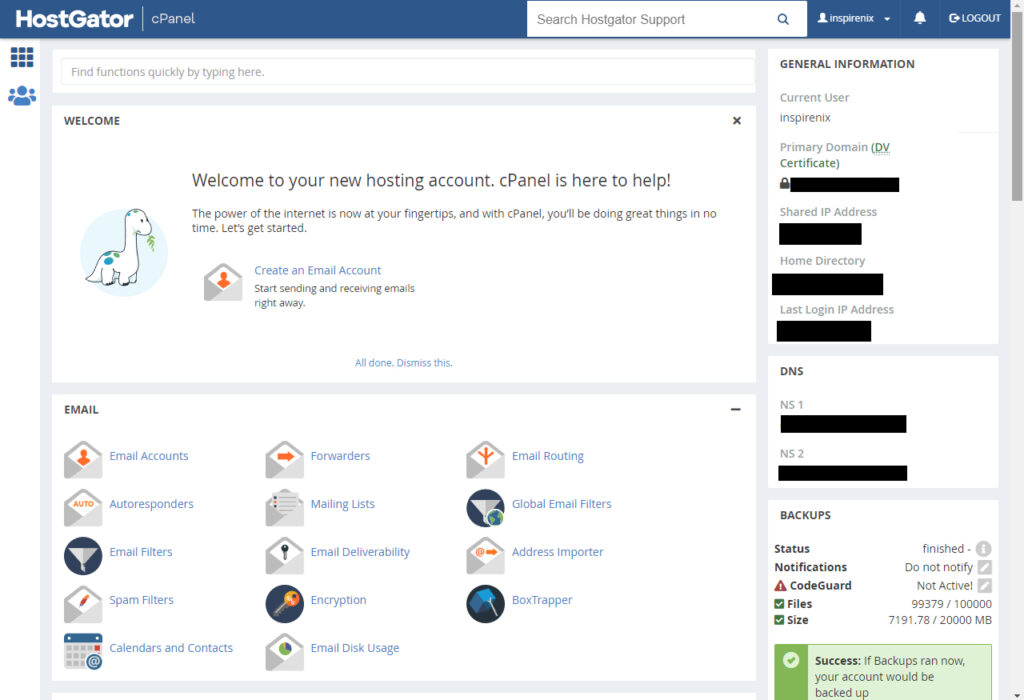
After you receive your email with the login details to the cPanel, the same email will contain the link to your cPanel login page as well. If you don’t have that link in your email, don’t worry, you can just type in “yourdomainname.com/cpanel” and it will load up your cPanel login page.
After you logged in to the cPanel with your login details, you will be directed to a page like this:
Looks complicated, isn’t it? In reality, you will not need to mess with most of these functions. But to be on the safe side, make sure to not click on anything that you don’t know about and follow the exact process in this guide and you will be good.
3. Installing WordPress to your domain
Installing WordPress to your domain is fairly simple.
- 1. Scroll down to the “scripts” section and click on “WordPress”.
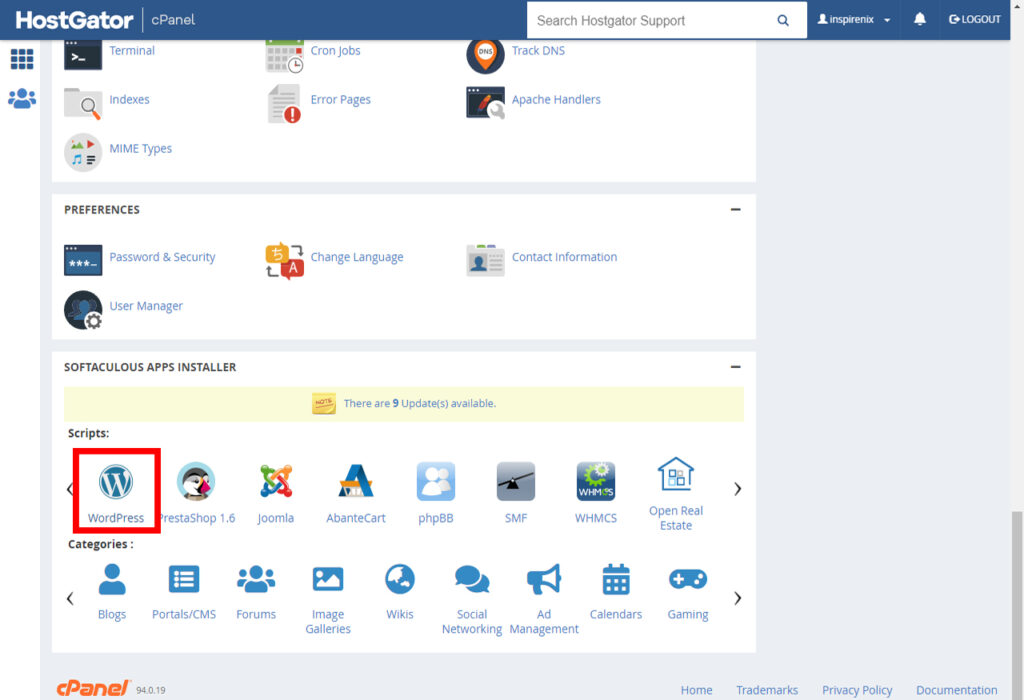
- Then you will be greeted with a WordPress overview page like this. The next step is to click on “Install now“.
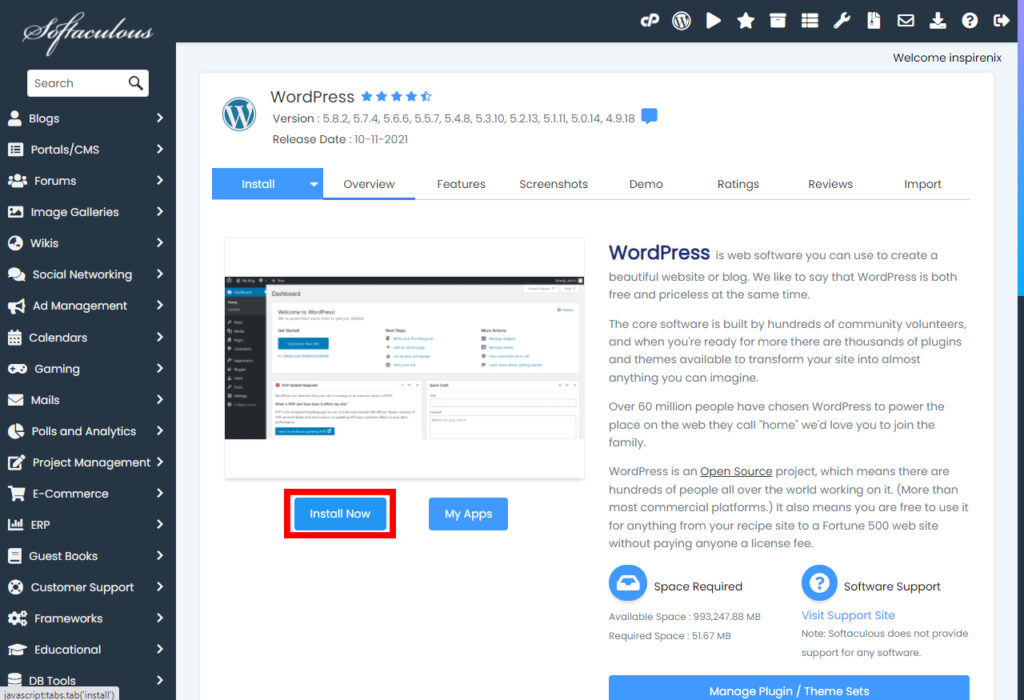
- Then select the domain name you want WordPress to be installed along with the HTTP or HTTPS protocol. If you are not aware of SSL, you can learn all about it here. Then type the name of your site along with the tagline and create yourself a username and a password. (Write this down somewhere if you can’t remember it)
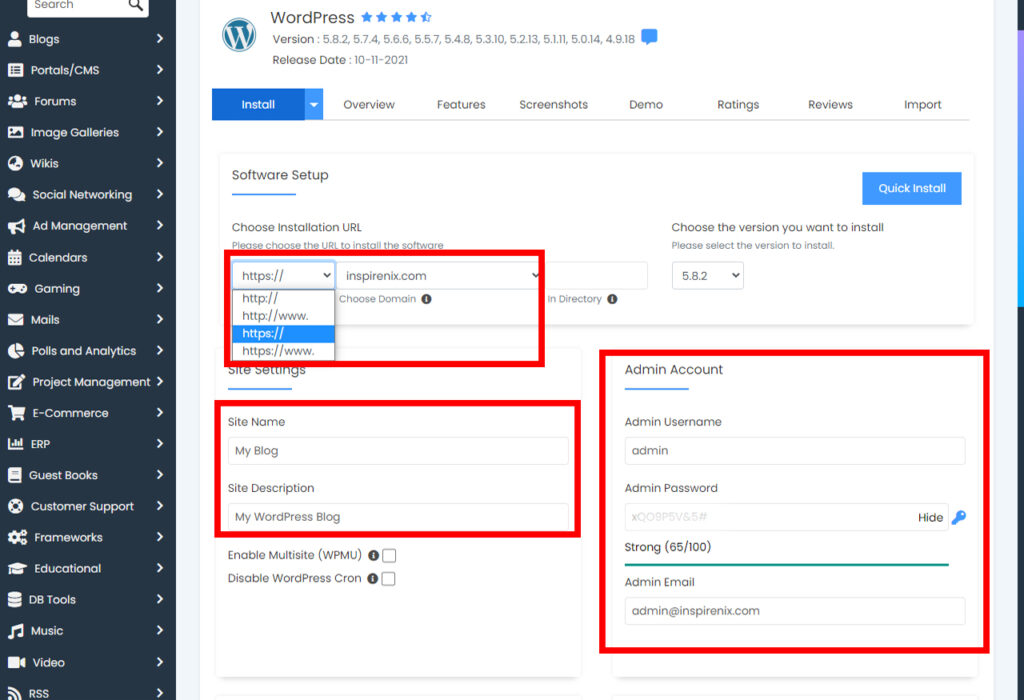
- Then scroll to the bottom and click on “Install”.
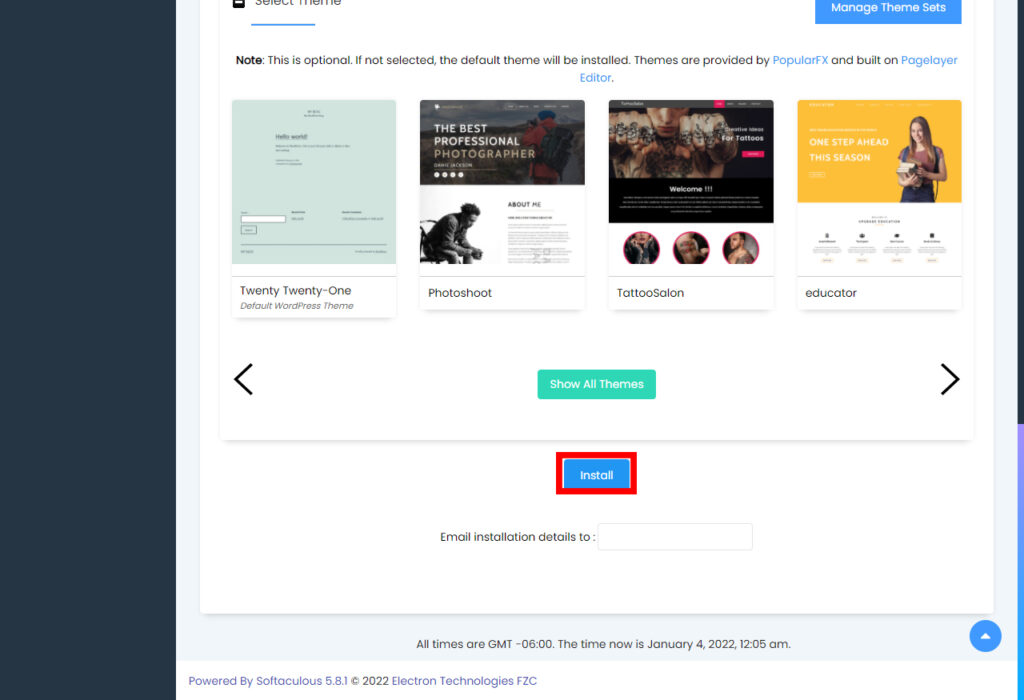
- After the installation process is complete, you will be redirected to a page like this where you can directly login to the WordPress dashboard by clicking this link. (Pay close attention to the URL of the link, that is how you will be able to log in to your WordPress dashboard in the future. Just type “yourdomainname.com/wp-admin” into the search engine and you will be directed to the WordPress login page where you can enter the login details which you setup earlier.
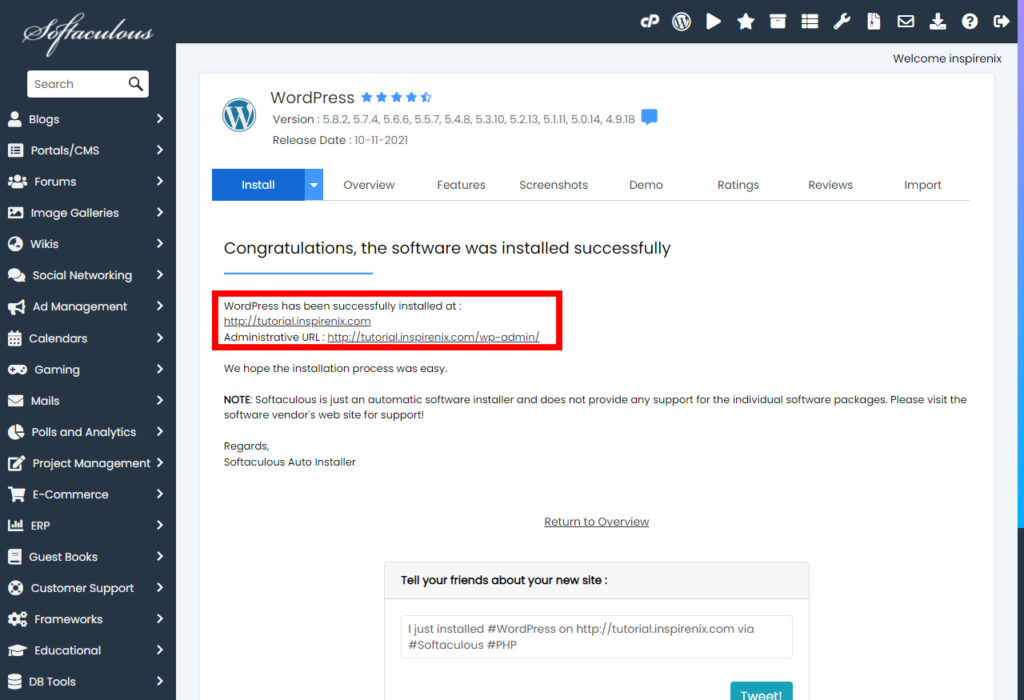
- This is your WordPress dashboard (after you logged in). All your customizations to the website are done via this dashboard.
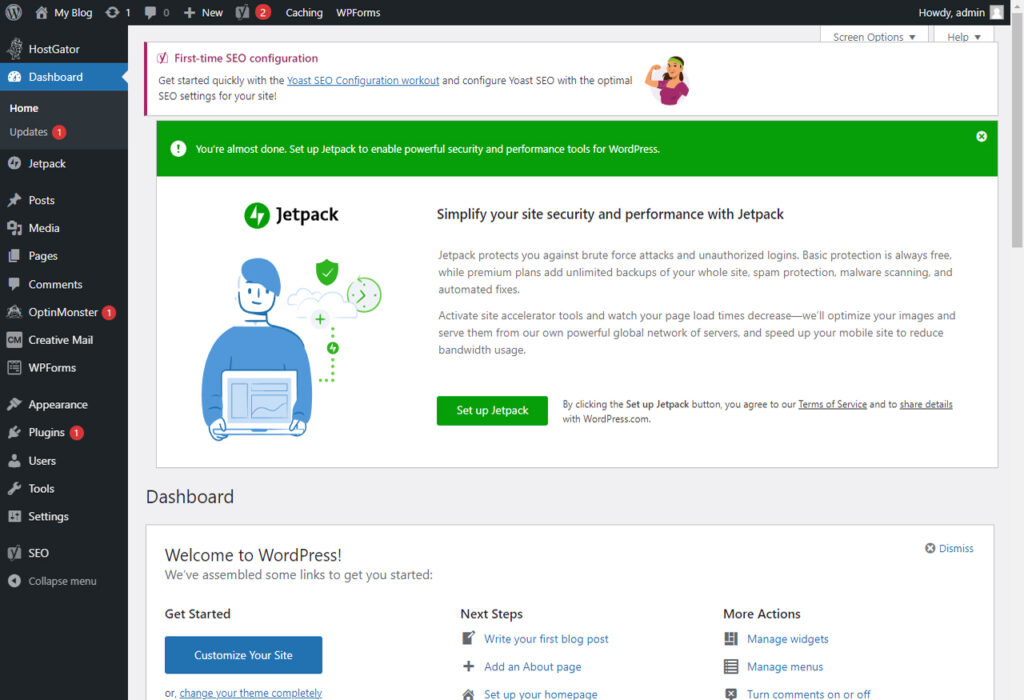
- Your website has now been preloaded with a default WordPress theme. If you wish to edit on this Basic Default theme, you can do so as well. As this is the default theme, I suggest that this is where you should just go to town with WordPress and see where everything is and get comfortable with it.
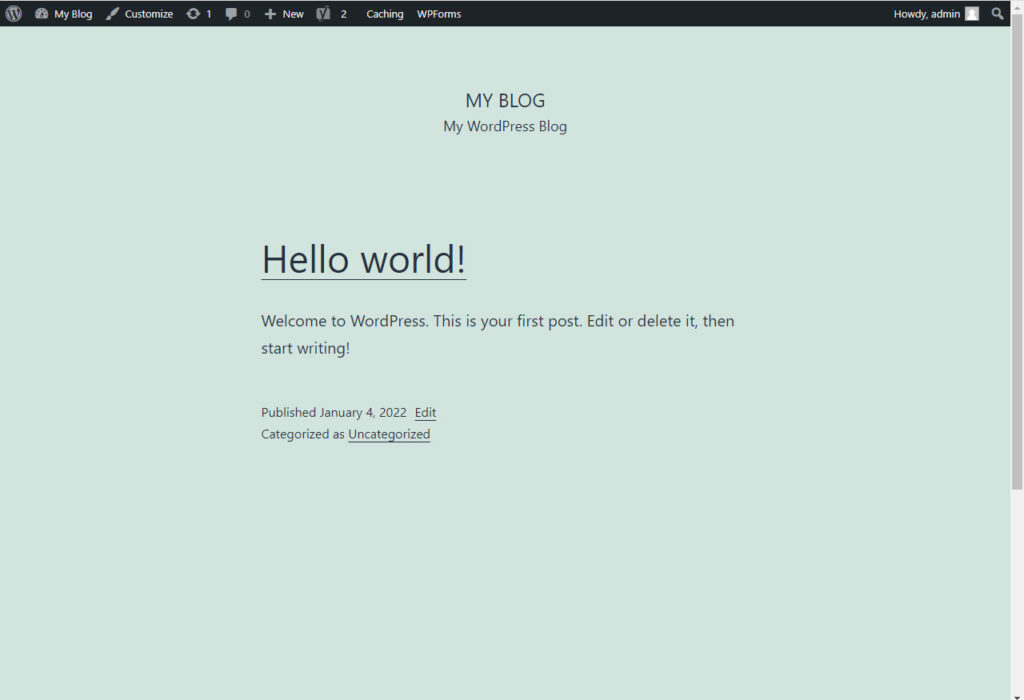
After You get comfortable with the dashboard and how the platform works, then you can move on to importing a theme and start customizing your website to your taste.
- You can go down and hover over “Appearance” and then click on “Themes” to go to the theme library.
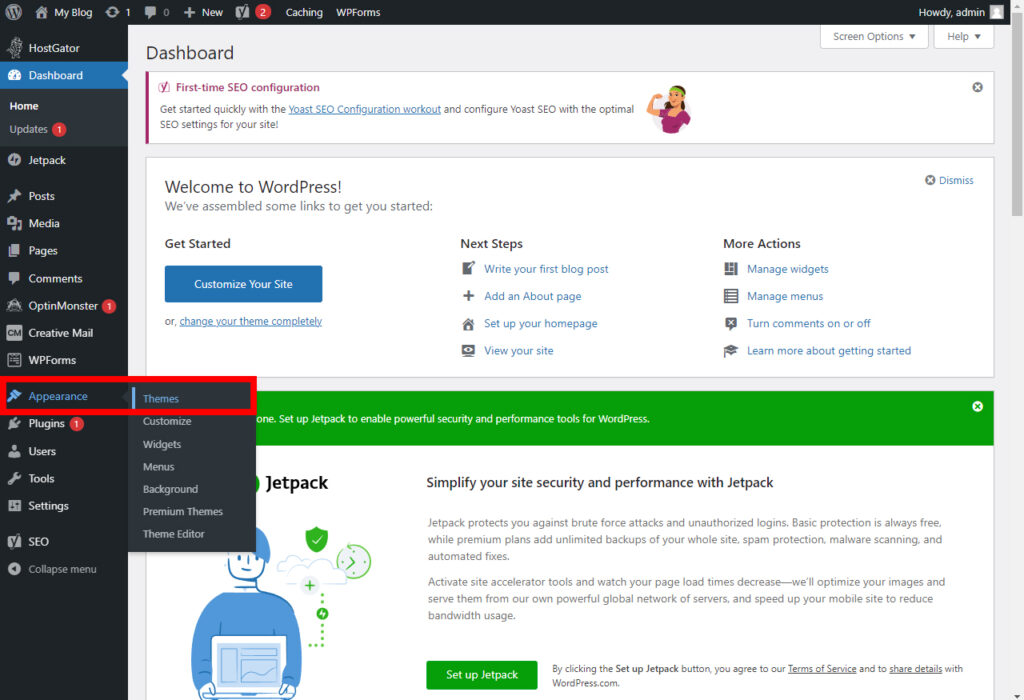
- After you are in the theme library, you can filter through the most popular themes by clicking on “WordPress.org Themes” on the top.
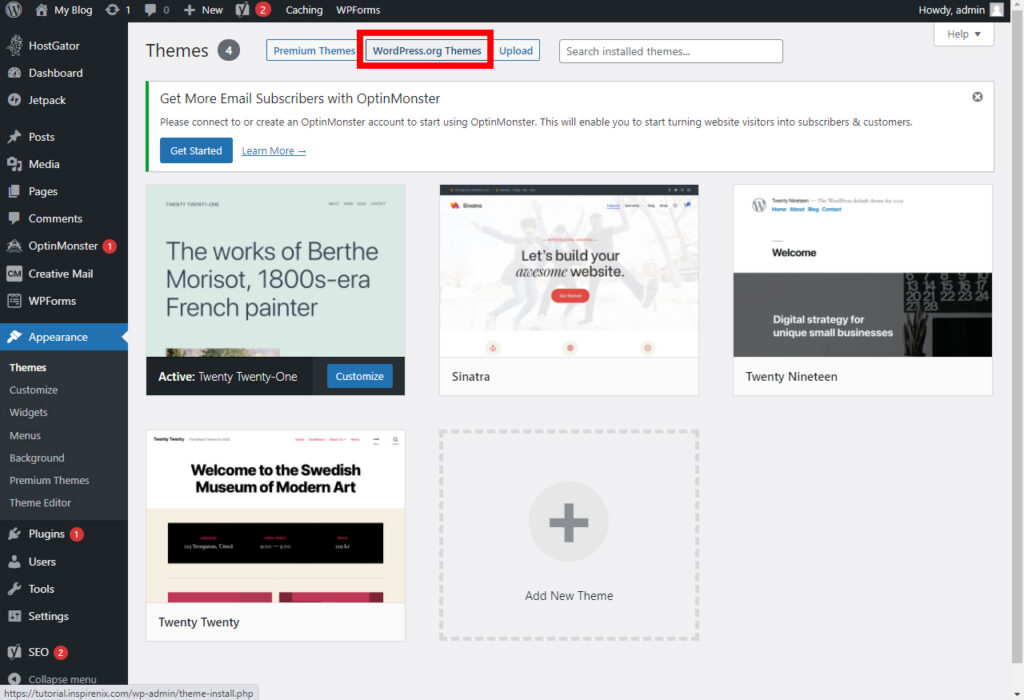
- After the Theme library has loaded, choose a theme and click on it to preview the theme, import the theme, and finally activate the theme.

There you go, you have successfully installed WordPress, chosen a theme you want to work with, installed the theme, and activated it on the site.
The only thing that is left for you to do is to start the initial design process and you will have a fantastic website in no time!
Conclusion
Congratulations! You reached the end of this article. Now that you know what WordPress is and how to install WordPress on to your website, I hope that you will now start designing amazing websites for you and for your clients using WordPress. Just remember one thing, Sky is the limit!
Keyword: All About WordPress
Title: All About WordPress | Everything You Need To Know – Inspirenix
Slug: all-about-wordpress
Meta: Want to learn about WordPress? Here is a complete guide on WordPress with all the things you need to know to get started with WordPress!

